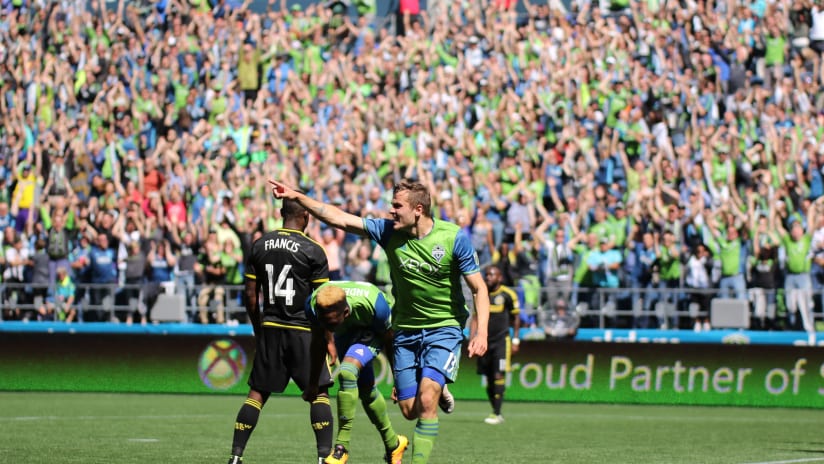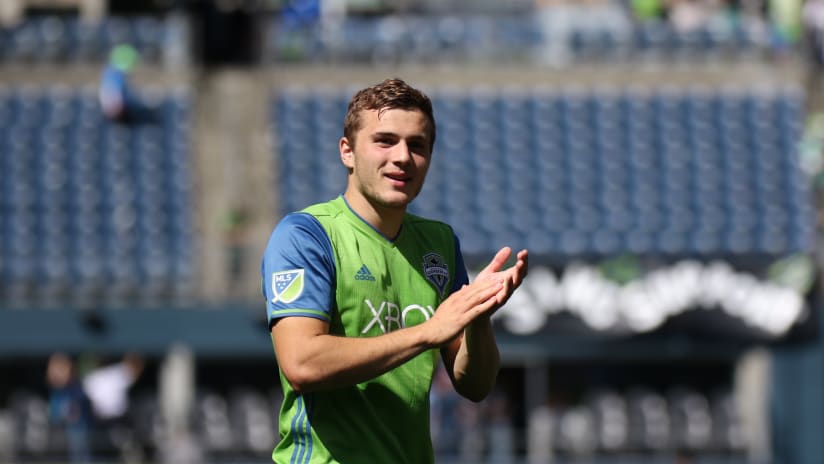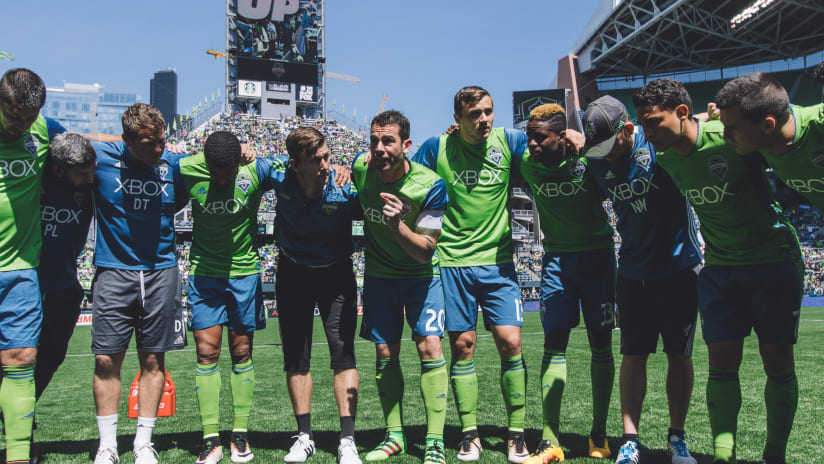Life for an MLS club is ultimately less about stopping losing skids before they start and more about adequately dealing with them when they arrive.
So it goes during life in one of the most topsy-turvy leagues in the world.
The Seattle Sounders are currently dealing with life on the wrong side of the playoff line. It’s so early in the season still that the mere mention of the playoffs is hardly worth acknowledging, but it’s also true that missed points in April and May can ultimately cost you playoff seeding come October.
In that sense, the team’s deflating 3-1 loss to the Colorado Rapids last weekend has already become a topic of conversation. What now?
Because there is quite literally no time to breathe in this league. Columbus Crew SC are coming to town on Saturday (1 p.m. PT; JoeTV, ROOT Sports (Outside Seattle)/KIRO 97.3 FM, El Rey 1360 AM)
The Rapids result dropped the Sounders’ record to 2-4-1 in their first seven games, good for ninth out of 10 teams in the Western Conference. After the Rapids loss, Sounders coach Sigi Schmid noted that it was the team’s worst performance of the season. That means it goes without saying that where the team goes from here is of vital importance.
The problems that require addressing splinter off in several directions, but there remains one glaring issue that needs immediate attention. From an analytical perspective, the Sounders simply aren’t good enough in front of goal.
Seattle is sixth in MLS in share of possession (52 percent) and second behind only Columbus in successful pass ratio at 82 percent. That tells you two things: Seattle can control the tempo of almost any match, and the team can successfully knit together passes. But attacks were not built upon those two pillars alone, and the fact that Seattle is in the bottom half of the league in both aggregate shots and shots on target means the team simply isn’t pulling the trigger enough and in dangerous enough areas.
The good news is that key attacking pieces Clint Dempsey and Nelson Valdez, both of whom missed the Colorado loss, practiced this week. The team dearly missed Dempsey against Colorado, and much of its timidity in the attacking third was down to the U.S. national teamer’s absence.
As for Valdez, his status seems to be in heavier doubt, but even a stint off the bench would be a boon to the attack.
The bad news? The status of Andreas Ivanschitz this weekend is simultaneously in doubt.
As we’ve documented in this space before, Ivanschitz has been the most integral piece of Seattle attack this season. He has three of the team’s four total assists this year, and a dizzying number of dangerous moments funneled through his dangerous left foot.
If Ivanschitz can’t go, Columbus gets that much more dangerous.
And make no mistake, despite a slow start to the season this Crew SC side is every bit as scary as the one that lost to Portland in MLS Cup in 2015.
Columbus’s flashier elements get most of the publicity, and for not insignificant reasons. Federico Higuain is one of the most electric creative attacking midfielders in MLS history, and his influence in the attacking third is undoubtable. Kei Kamara is one of the five most consistently dangerous strikers in MLS. And the wide combination of Ethan Finlay and Justin Meram is unquestionably effective.
But there’s little doubt the Crew’s engine room is primarily fed by Wil Trapp.
The talented American defensive midfielder has been a key cog for Columbus over the past couple years, but the 23-year-old maestro has taken another step forward in 2016. He’s currently second in MLS in average passes-per-game with 72, and his completion average of 88.3 percent puts him in the league’s top 10.
Perhaps unsurprisingly based on the technically efficient style of play Gregg Berhalter’s engendered in this side, No. 1 is occupied by Trapp’s defensive midfield partner Mohammed Saeid.
Trapp prefers to drop in between deeply split center backs to collect possession as the nexus of almost every meaningful attack. In this way, the Sounders know they’ll need to press higher than usual out of the midfield to deny Trapp the oxygen to operate. If left to his own devices, the Crew are extremely difficult to stop. And cutting them off at the head means removing as much danger from Trapp’s feet as possible.
As for Seattle, Schmid will continue tinkering in a clogged, somewhat disjointed midfield to find a combination that works. Erik Friberg’s return in a sub role last weekend could presage a move in the middle. Since Friberg is more of a forward rover than recent starter Cristian Roldan, that could be an attack-minded change we see in the coming week.
And as ever, Dempsey’s fungible role could see him fit in anywhere from the central midfield to left winger to striker. If, of course, he plays.
The bottom line for Seattle is things aren’t quite as bleak as the early season table would seem to indicate. Seattle continues to out-pass teams, continues to build attacks and continues to get spurts of quality individual performances. But the Sounders will need to find a spark in front of goal in order to snap out of its funk and make this summer much more pleasant than the last.







